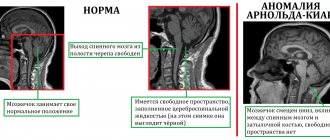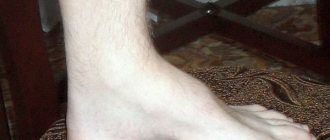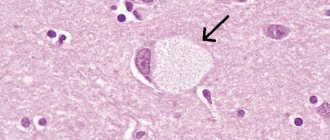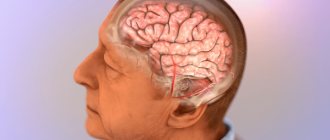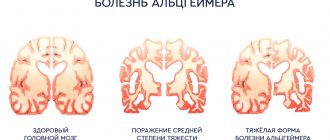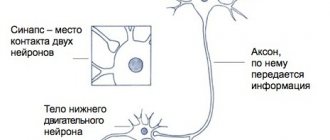Raynaud's disease is one of the most mysterious diseases that affects about 5% of the world's population. It was first described in 1862 by French physician, scientist and educator Maurice Raynaud , who observed a girl suffering from sudden attacks of numbness in her limbs. Based on an analysis of five similar cases, the author concluded that these symptoms belonged to a new, previously unknown disease, and described in detail all its symptoms.
The disease manifests itself as sudden attacks of spasm in the small arteries of the arms and/or legs, and sometimes in other peripheral parts of the body - the tip of the nose and ears. As a result, blood ceases to flow in sufficient quantities to the cells of these parts of the body, leading to the development of so-called ischemia (bleeding). As a rule, this is preceded by hypothermia or severe stress. As the disease progresses, it can eventually lead to a serious complication - gangrene of the fingers.
Most often, the disease occurs in residents of cold climates and mainly affects middle-aged people (40-50 years old). Raynaud's syndrome occurs 4 times more often in women than in men.
1 General blood test
2 Diagnosis of Raynaud's syndrome
3 Diagnosis of Raynaud's syndrome
When talking about this disease, we mean two types of pathology: Raynaud's disease and Raynaud's syndrome .
Raynaud's disease is considered an independent disease with an unknown cause.
Raynaud's syndrome may be a manifestation of any other underlying diseases. When they talk about Raynaud's phenomenon, they most often (in most patients) mean Raynaud's syndrome. And only 15% of patients have an independent disease with the same name.
A mandatory sign of this disease is symmetrical damage to the limbs.
Causes of Raynaud's syndrome
Raynaud's syndrome can be a consequence of the following diseases and factors:
- various autoimmune connective tissue pathologies (systemic scleroderma, rheumatoid arthritis, systemic lupus erythematosus);
- inflammatory diseases of blood vessels - systemic vasculitis (granulomatosis or Wegener's disease, polyarteritis nodosa, drug-induced vasculitis, cryoglobulinemic vasculitis);
- blood diseases (thrombophlebitis, thrombocythemia, cryoglobulinemia, leukemia);
- diseases of the endocrine system (pathology of the adrenal glands and thyroid gland);
- hypothermia, stress, emotional overstrain;
- long-term use of medications that have a vasoconstrictor effect (migraine medications).
Provoking factors
The underlying causes of Raynaud's syndrome have not been identified, but there are a number of factors that, according to doctors, contribute to its development. These include:
- hereditary tendency;
- permanent injury to fingers and toes;
- endocrine system disorders: diabetes, hyperthyroidism, hypothyroidism, etc.;
- disorders associated with hematopoietic functions;
- constant contact with cold water;
- some diseases of the spine;
- alcohol dependence, drug addiction;
- unstable mental state;
- heavy metal intoxication;
- serious stress;
- constant contact with chemicals;
- certain autoimmune diseases.
The disease in an advanced state can manifest itself even without provoking factors - then they talk about spontaneous attacks of Raynaud's syndrome.
Symptoms of Raynaud's disease
Symptoms of the disease can begin quite suddenly, for example, after doing laundry or washing dishes in cold water, walking in the cold, sometimes after exposure to stress. Most often, 2-5 fingers and toes are affected, in more rare cases - other protruding parts of the body: ears, nose, chin and even tongue.
The attack is manifested by a sharp pallor of the fingers, they become white and very cold, then the skin color acquires a bluish tint, and after the end of the attack, the fingers become purple-bluish and painfully hot and swollen.
Over time, attacks become more frequent, can occur for no reason, and their duration increases to 2 hours.
Due to poor nutrition of the skin, the pads of the fingertips become flattened, the skin becomes dry, begins to peel, and hard-to-heal ulcers may appear around the nails. In severe cases, tissue necrosis can also begin - dry gangrene.
Examination of capillaries (capillaroscopy) in patients suffering from Raynaud's syndrome often does not reveal significant changes.
Causes and risk factors for developing Raynaud's disease and syndrome
Predisposing factors are:
- heredity,
- constitutional deficiency of vasomotor innervation of terminal vessels,
- psychogenic factors,
- injuries of the central nervous system,
- chronic poisoning with nicotine, alcohol,
- endocrine disorders,
- infectious diseases,
- overwork and overheating.
Meteotropic influences and occupational hazards are of particular importance:
- people living in damp and cold climates,
- chemical workers,
- miners, fishermen, loggers.
Also, a high incidence is observed in people who often overexert their hands and fingers: milkmaids, typists, pianists, etc.
Diagnosis of Raynaud's syndrome
Since Raynaud's syndrome often occurs against the background of rheumatic and autoimmune diseases, laboratory research methods aimed at identifying them become important. The following types of tests are taken (for more details, see rheumatological examination):
- general blood test (increased ESR, decreased hemoglobin, leukopenia and thrombocytopenia are important);
- biochemical blood test (with Raynaud's syndrome, significant changes, as a rule, are not detected);
- coagulogram;
- general urine analysis;
- immunological blood tests (level of immunoglobulins, rheumatoid factor, cryoglobulins, various autoantibodies, for example, antinuclear antibodies, antibodies to DNA).
1 Treatment of Raynaud's disease
2 Reflexology (acupuncture)
3 Treatment of Raynaud's disease
Symptoms
Clinical features of Raynaud's syndrome:
- most often, color changes are observed on the fingers;
- changes begin on one finger, then spread to other fingers and become symmetrical on both hands;
- the II-IV fingers of the hands are most often involved, the thumb usually remains unchanged;
- changes in skin color may also be observed in other areas: ears, tip of the nose, face, above the knees;
- during Raynaud's attacks, livedo reticularis may appear on the extremities, which disappears after the completion of vasospasm;
- in rare cases, damage to the tongue is observed, which is manifested by numbness and transient speech impediments.
Clinically, an attack of Raynaud's disease consists of three phases:
- The first phase is expressed in spasm of the arteries, pallor of the skin, a decrease in its temperature, numbness, and pain.
- The second phase is characterized by the development of cyanosis of the skin and increased pain.
- The third phase is swelling and redness of the skin, decreased pain.
However, classic three-phase Raynaud's attacks are observed only in 15% of patients; in most cases, two-phase color changes are observed Source: Alekperov R.T. Raynaud's syndrome in the practice of a rheumatologist / R.T. Alekperov // Modern rheumatology. - 2014. - No. 2. - P. 37-46. .
The duration of the attack is usually 15-20 minutes, but sometimes it can last even several hours.
At the last stage of the disease, persistent skin lesions develop, and deformation of the fingers is possible.
In most cases, Raynaud's disease is symmetrical in nature: if the pathology affects one hand, then after some time the pathology develops on the second.
Treatment of Raynaud's disease
Modern medical capabilities make it possible, if not to cure completely, then to significantly reduce the severity of the symptoms of Raynaud's disease. They use medication, physiotherapy, reflexology (acupuncture). Treatment of diseases that lead to the development of symptoms of Raynaud's syndrome is important.
Measures to prevent exacerbation of Raynaud's disease:
- to give up smoking;
- prevention of hypothermia (try not to overcool your hands, feet and face, dress according to the weather, make sure your shoes are dry, wear mittens in winter, etc.);
- adherence to sleep and rest patterns.
Highly qualified rheumatologists at MedicCity will help you cope with the manifestations of various rheumatological diseases. Our clinic diagnoses and treats rheumatoid arthritis, ankylosing spondylitis, reactive arthritis, gout, osteoarthrosis, osteoporosis, Sjogren's disease, systemic lupus erythematosus, systemic vasculitis, dermatomyositis, systemic scleroderma, rheumatism, etc. The most modern treatment methods are used. Trust the professionals!
Diagnosis of Raynaud's phenomenon
The diagnosis of Raynaud's disease is established primarily on the basis of complaints and clinical symptoms and is considered reliable if the answer to the following questions is positive:
- Is there any unusual sensitivity to cold?
- Does the color of fingers change when exposed to cold?
- do they turn white and/or bluish?
Along with the diagnosis of SR, its clinical variant is specified - primary or secondary. For this purpose, such instrumental and laboratory methods as laser Doppler flowmetry, thermography, the QNL method, plethysmography, and color Doppler ultrasound scanning are used.
Treatment
Since stress, as the diagnosis of Raynaud’s syndrome shows, is one of the possible factors in the development of the disease, treatment will be aimed both at working directly with the vessels and at improving the overall quality of a person’s life.
To restore physical condition, vasodilators, antispasmodics, glucocorticosteroids, cytostatics and other medications are used. If medication and additional recommendations do not give the desired result, surgery is prescribed. The endoscopic method makes the operation more gentle when it comes to correcting the functioning of blood vessels. But in extreme cases, patients may require amputation of a limb or part of it.
At the same time, as already mentioned, other methods of work are used to treat Raynaud's syndrome:
- psychotherapy. It aims to reduce stress levels, as well as discover the hidden causes of suppressed stress, if any;
- different types of physiotherapy. These are magnetic therapy, electrophoresis, paraffin baths, etc.;
- physiotherapy;
- mud treatment;
- a diet focused on healthy eating;
- special massages and much more.
As an aid, after consultation with a doctor, for Raynaud's syndrome, you can use some folk recipes, for example, pine baths.
Treatment, as a rule, is long-term, and therefore requires patience from the patient and strict adherence to all recommendations of the attending physician.
2. Reasons
The direct cause of Raynaud's phenomenon is considered to be a violation of the regulation of vascular tone on the part of the nervous system. The peculiarity is that the fingers are locally affected, and their terminal phalanges are the most affected. In response to triggering conditions, i.e. to cold or mental stress, blood vessels of various sizes spasm in the fingers and palms, as a result of which ischemia develops, i.e. deficiency of blood supply and nutrition - hence the classification definitions of Raynaud's disease as a vasospastic disease and angiotrophoneurosis. However, the root cause of this failure of neural regulation remains, despite all research efforts, still unclear. Thus, attempts to connect Raynaud's disease with heredity have led nowhere: the statistical significance of the proportion of patients with a clear family predisposition does not exceed the level of random coincidences.
The statistical relationship with the following factors is much more reliable:
- systematic and prolonged hypothermia of the hands;
- injuries to the palms and fingers;
- situations of chronic stress and one-time psychological trauma;
- endocrine disorders;
- diseases of the rheumatic group;
- occupational hazards (primarily vibration).
Visit our Therapy page
Treatment of Raynaud's syndrome in Moscow
Patients of the Yusupov Hospital receive high-quality medical services, as doctors and staff take a responsible approach to fulfilling their duties. Raynaud's syndrome, the symptoms of which appear unexpectedly in patients, raises many questions and concerns. Rheumatologists at the Yusupov Hospital clearly explain to patients the features of this disease and the most optimal methods of treating it.
The therapy clinics of the Yusupov Hospital, where they provide care to patients with Raynaud's syndrome, have modern equipment to identify circulatory disorders and associated pathologies that can worsen a person's quality of life. When treating the disease, specialists use modern approaches and means that have a minimum number of side effects.
For a comfortable stay for patients, the Yusupov Hospital has a pre-registration system by telephone, so there is no long wait required to visit a specialist.

